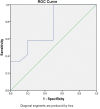Correlation Between Clinical Factors and Pregnancy Outcome Following Repeat Cerclage: A Retrospective Analysis of a Chinese Population
- PMID: 35445034
- PMCID: PMC9013839
- DOI: 10.3389/fmed.2022.846755
Correlation Between Clinical Factors and Pregnancy Outcome Following Repeat Cerclage: A Retrospective Analysis of a Chinese Population
Abstract
Background: The role of repeat cerclage (RC) among patients with prolapsed membranes remains controversial. We aimed to investigate the effectiveness of RC and assess the correlation between clinical factors and pregnancy outcome following RC.
Methods: The clinical data of patients who underwent RC for prolapsed membranes after prior cerclage were retrospectively investigated. The clinical characteristics of patients were compared between singleton and twin pregnancies. The clinical characteristics of singleton pregnancies were compared between the gestational age (GA) at delivery <28 weeks' and ≥28 weeks' groups. Receiver operating characteristic (ROC) curve analysis was performed to determine predictive factors. Singleton patients were divided into two groups according to GA at RC as follows: GA <22.3 weeks and GA ≥22.3 weeks. Pregnancy outcomes were compared between groups.
Results: The mean GA at delivery of singleton pregnancies was significantly higher than that of twin pregnancies. The mean latency between RC and delivery of singleton pregnancies was significantly longer than their twin counterparts. There were significant differences in the pregnancy outcomes between the GA <22.3 weeks group and GA ≥22.3 weeks group. Kaplan-Meier survival curves showed a lower incidence of neonatal death in the GA ≥22.3 weeks group compared with that in the GA <22.3 weeks group.
Conclusions: RC may be an effective method to prolong the duration of pregnancy among patients with singleton pregnancy. However, the selection of RC for patients with twin pregnancies remains controversial. GA at RC appears to be fair for predicting pregnancy outcomes following RC.
Keywords: gestational age; pregnancy outcome; prolapsed membranes; repeat cerclage; retrospective analysis.
Copyright © 2022 Cai, Xia and Na.
Conflict of interest statement
The authors declare that the research was conducted in the absence of any commercial or financial relationships that could be construed as a potential conflict of interest.
Figures


Similar articles
-
Postoperative cervical length to predict success of repeat cerclage in singleton pregnancies with prolapsed membranes after prior cerclage.Front Med (Lausanne). 2023 Aug 21;10:1248321. doi: 10.3389/fmed.2023.1248321. eCollection 2023. Front Med (Lausanne). 2023. PMID: 37671397 Free PMC article.
-
Prognostic Significance of Neutrophil-to-Lymphocyte Ratio for Repeat Cerclage in Women with Prolapsed Membranes.Biomed Res Int. 2018 Oct 16;2018:1507398. doi: 10.1155/2018/1507398. eCollection 2018. Biomed Res Int. 2018. PMID: 30410922 Free PMC article.
-
Pregnancy outcomes following transvaginal cerclage for cervical insufficiency: Results from a single-center retrospective study.J Huazhong Univ Sci Technolog Med Sci. 2017 Apr;37(2):237-242. doi: 10.1007/s11596-017-1721-0. Epub 2017 Apr 11. J Huazhong Univ Sci Technolog Med Sci. 2017. PMID: 28397052
-
Perinatal outcomes of iatrogenic chorioamniotic separation following fetoscopic surgery: systematic review and meta-analysis.Ultrasound Obstet Gynecol. 2021 Sep;58(3):347-353. doi: 10.1002/uog.23588. Ultrasound Obstet Gynecol. 2021. PMID: 33428299
-
Cerclage for women with twin pregnancies: a systematic review and metaanalysis.Am J Obstet Gynecol. 2019 Jun;220(6):543-557.e1. doi: 10.1016/j.ajog.2018.11.1105. Epub 2018 Dec 7. Am J Obstet Gynecol. 2019. PMID: 30527942
Cited by
-
Postoperative cervical length to predict success of repeat cerclage in singleton pregnancies with prolapsed membranes after prior cerclage.Front Med (Lausanne). 2023 Aug 21;10:1248321. doi: 10.3389/fmed.2023.1248321. eCollection 2023. Front Med (Lausanne). 2023. PMID: 37671397 Free PMC article.
References
LinkOut - more resources
Full Text Sources
Medical

